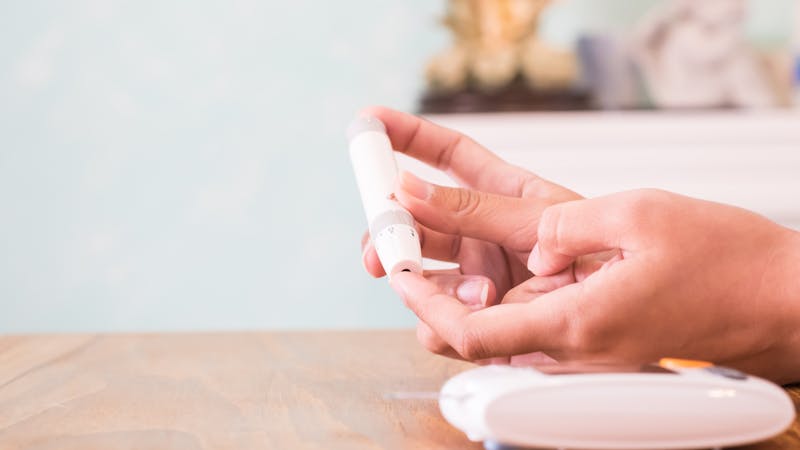The best way to test ketones in blood, breath or urine
Ketones in your blood… ketones in your breath… ketones in your urine… When you are in ketosis, ketones are everywhere. Should you measure them? Why not? It is objective feedback, and it can be motivating. Perhaps knowing where you actually are, physiologically, will give you that nudge to reach your goal. Or maybe it will confirm you are already there. Either way, knowledge is power.
This review, like all the content on our site, is completely independent and free from industry influence.
Ketone testing can be cheap and easy. But it can also be expensive and invasive. There are three basic categories of testing, each with its pros and cons. Accuracy, price and qualitative factors vary considerably across the options. If you are wondering what method might be right for you, this guide will provide answers.
In a prior guide, I compared four ketone meters that test blood ketone levels. I will use the winning meter from that review, the Keto-Mojo, and compare it to several options within each of two other categories of testing — ketones in your breath and ketone in urine.
As with the ketone blood meter review, I’ll look at each contestant across three attributes: accuracy, price and qualitative factors. In the end, there will not be a clear winner, but you will really understand your options and the tradeoffs among them. Only you can decide which method is best for you.
1. The three types of ketone testing: blood, breath and urine
Each method of ketone testing measures something different: blood tests measure β-hydroxybutyrate levels, breath tests measure acetone levels and urine tests measure acetoacetate levels. β-hydroxybutyrate, acetoacetate and acetone are all ketones produced during fat metabolism. If you are burning fat, you are making ketones, so all three can be a gauge of ketosis.
When I am running on ketones, all three are present in my blood. Some acetoacetate molecules get excreted in urine, so I can measure their concentration as a proxy for ketone levels in the blood. Acetone is actually small enough to pass from the blood into the lungs, so small quantities are present in exhaled breath.
Because each method is different and no linear relationship exists between the different ketone measurements, direct comparisons between two methods is not possible. However, I ran each method through the same protocol at essentially the same point in time, so I will have compatible data and user experience to consider across each method.
Testing ketones in blood
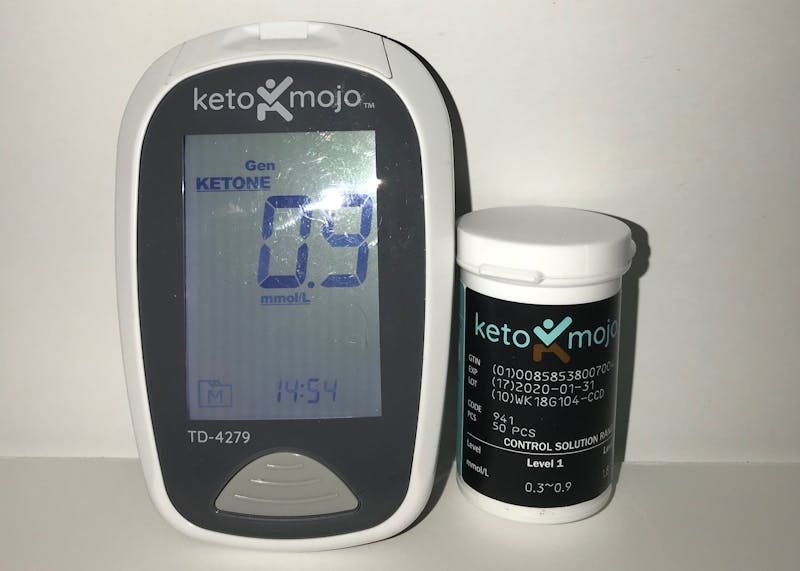
If you purchase a blood ketone meter, you get a reading of the amount of β-hydroxybutyrate circulating in your blood. It requires a finger-stick to produce a very small drop of blood for testing, but is otherwise relatively quick and easy.
Blood ketone meters require a battery (included with purchase), but they do not have to be charged or plugged in. They require a test strip for each test (about $1/strip) and disposable lancets.
I have already tested blood ketone meters. In that review, they reliably tracked with commercial laboratory tests for β-hydroxybutyrate. Thus, I used the winning meter, Keto-Mojo, to benchmark other ketone measurements against blood ketone levels in this experiment.
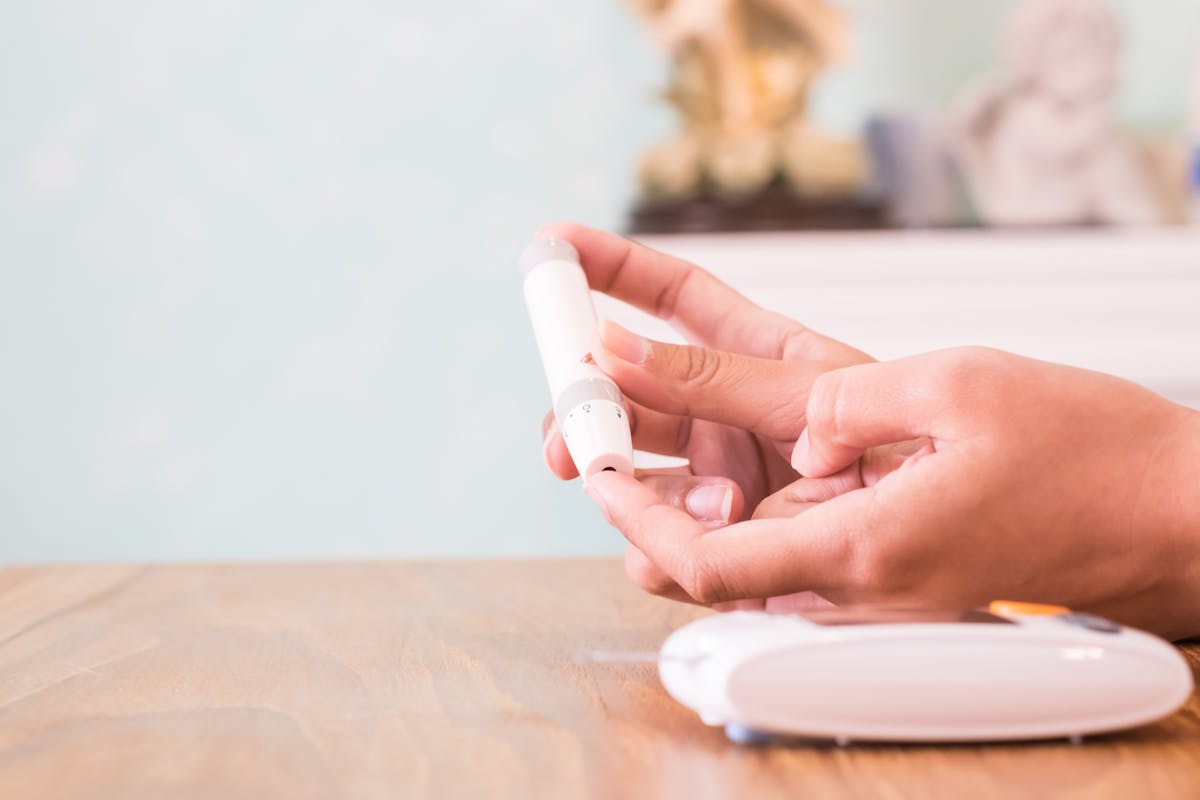

Which is the best ketone meter on the market?
GuideAre you in ketosis? Are you sure? With a blood ketone meter, you can test for blood levels of beta hydroxybutyrate, a ketone that your body produces when in ketosis.
Testing ketones in breath
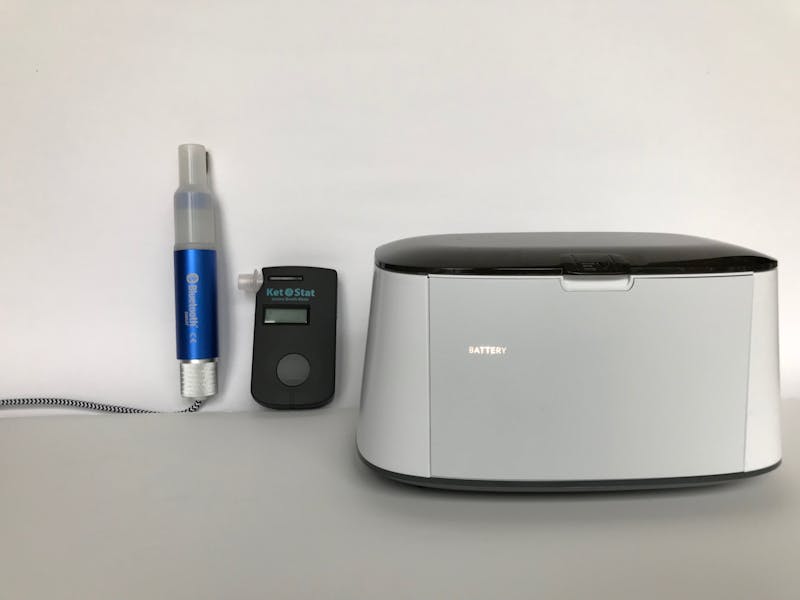



There are several different devices on the market that test for the breath ketone, acetone. They vary widely in design and price. I tested three: Ketonix, Keto Stat and LEVL.
Ketonix
The Ketonix requires some setup before use. It must be charged for about 12 hours and requires that you download an app onto your smart phone and pair it with the device before you can begin taking measurements.
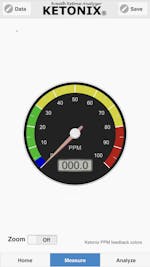



Once set up, a deep exhale — from the bottom of your lungs into the device — is all that it takes to get a measurement. This is not the same as a deep breath! The instructions emphasize using your muscles to force all the air out of your lungs.
During testing, I occasionally needed to close the app and reopen it to get it to reset and work correctly. On one occasion, I needed to unplug the device and plug it back in to reset it.
Can you test any time with a Ketonix? Not really. The manufacturer suggests waiting until alcohol is completely out of your system before testing. In my experience, even just a glass of wine could really skew the test toward much higher readings, suggesting the sensor struggles to distinguish alcohol from acetone.
Keto Stat
The Keto Stat was simple to set up; it just required inserting a triple A battery.
After turning on the device, a countdown begins. When it reaches 0, a deep, 10 second exhale is required.
LEVL
The LEVL requires considerable setup before use. It must be charged for 24 hours and requires that you download an app onto your smart phone and pair it with the device before you can begin taking measurements.
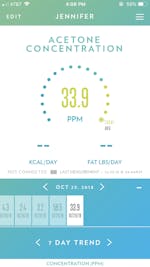



Once calibrated, all that is required is to raise the lid and press the mode button to select the user. Then, after holding your breath for at least 5 seconds, exhale into the test pod, place the pod in the device and close the lid.
LEVL also suggests that you replace its sensor module every month ($50 part). This requires an Allen wrench (included) and a Phillip’s head screwdriver, plus pressing the mode button in a particular pattern. Again, the instructions are clear, but this level of mechanical tinkering is not for everyone.
The LEVL does not have a battery option, so it can only be operated when connected to a wall outlet.
LEVL cautions against testing within 60 minutes of the following: Alcohol, breath mints, chewing gum, cough drops, throat lozenges, tobacco and e-cigarettes, lip balm, smoking, mint or green tea, mouthwash, non-sugar sweeteners (e.g., Sorbitol), toothpaste, water enhancers. (In my experience, alcohol skews the LEVL readings for much longer than an hour.)
Testing ketones in urine
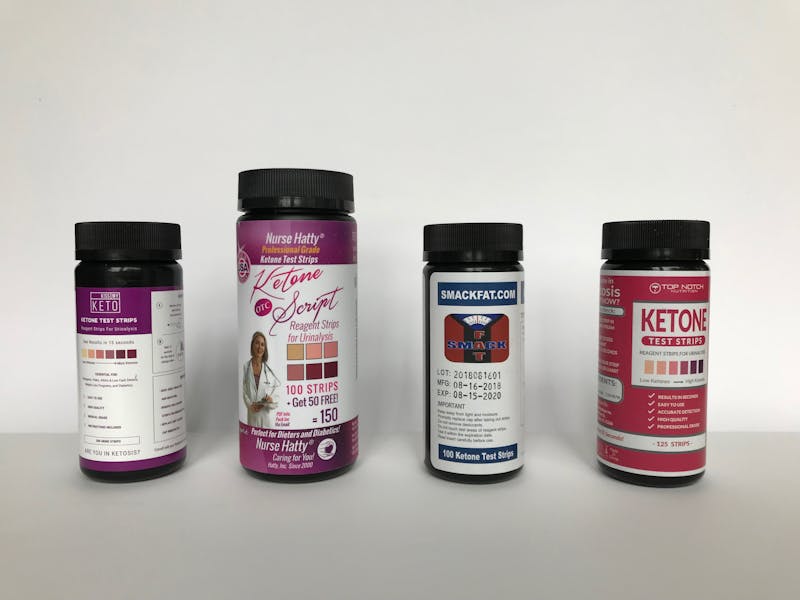



The low-tech way to test for ketosis is with urine test strips designed to check for the ketone acetoacetate. There are many commercial brands available on Amazon. I tested four brands: Kiss My Keto, Nurse Hatty, Smack Fat and Top Notch.
All of the keto urine strips look pretty much alike, although the Nurse Hatty strips are longer — 4.25” vs. 3.5” — perhaps making them a bit better for mid-stream testing. All brands use the identical chemical, sodium nitroprusside (at 7.1% for most, but 7.7% for the Nurse Hatty brand), to check for acetoacetate.
The instructions for use varied. Two of the brands, Top Notch and Kiss My Keto, suggested reading the ketone strip 15 seconds after dipping it in urine for 1-2 seconds. The Nurse Hatty brand directed a 40 second waiting period before reading the strip. The Smack Fat brand recommended submerging the test strip in a urine sample for 40 seconds. (Note that the Smack Fat strips worked using the “dip and wait for 15-40 seconds” method, too.) In each case, I followed package instructions.
2. Accuracy
How accurate and reliable were the various methods? The only way to tell was to set up a straighforward and easy to replicate experimental procedure that was exactly the same for each method. Then, under the umbrella of accuracy, I will address two qualities and how they differ across the testing methods — precision and consistency.
Testing design
After a fast of 12-14 hours, I took two ketone reading from the same blood sample on the Keto-Mojo.
Immediately after the blood test, I used the breath testing equipment, four times for each device. I then moved straight to the urine strips, with four back-to-back readings from each of the brands. Finally, I tested my blood again with two more readings from the Keto-Mojo.
I repeated this procedure five times, on five separate dates.
The repetitive design of the experiment allowed me to evaluate the ketone measurement devices several times (4 readings across 4 tests, so 16 readings in total for each brand), which allowed me to look for both precision and internal consistency.
I chose to test when I was in full-blown ketosis, in moderate ketosis (twice) and out of ketosis, so I could see if the brands perform accurately in different conditions. This would also help me judge whether the measurements tell me what I ultimately want to know: Am I in ketosis, and if so, to what degree?
Benchmark (blood): |
|||||
| Test #1 | Test #2 | Test #3 | Test #4 | Test #5 | |
| Keto-Mojo | 3.6 | 1.4 | 1.2 | 0.8 | 0.8 |
Breath meters: | |||||
| Test #1 | Test #2 | Test #3 | Test #4 | Test #5 | |
| Ketonix | 14.6 | 4.7 | 3.5 | 3.3 | 3.0 |
| Keto Stat | 0 | 0 | 0 | 0 | 0 |
| LEVL | 421.1 | 18.8 | 14.1 | 12.5 | 7.2 |
Urine strips: |
|||||
| Test #1 | Test #2 | Test #3 | Test #4 | Test #5 | |
| Kiss My Keto | moderate | moderate | trace | none | none |
| Nurse Hatty | moderate | moderate | trace | none | none |
| Smack Fat | moderate | moderate | trace | none | none |
| Top Notch | moderate | moderate | trace | none | none |
As you can see in the above results, with the exception of the Keto Stat breath meter, which was completely ineffective, all of the brands tested gave a decent indication of my level of ketosis. However, the Keto-Mojo disappointed, with higher-than-expected readings on the “Out of ketosis” tests.
Keto-Mojo
For the fourth test, I had been eating carbs for a few days and expected to be out of ketosis. The Keto-Mojo gave me elevated readings, but the other methods showed I was out of ketosis. I figured it was some sort of fluke, so I ate more bread and tried again the next day (bonus 5th test). Again, the Keto-Mojo was mixed, but high enough to indicate moderate ketosis, whereas the other methods showed no ketosis.
At this point, I pulled out another blood meter (on hand from the earlier blood ketone meter guide testing) and got a “Lo” reading, matching the breath and urine testing. It would seem that my Keto-Mojo “benchmark” had it wrong… Why? It is hard to say. Given how well the meter performed in the last experiment, I can only guess that perhaps the set of 50 test strips that I purchased to begin this new experiment were slightly off. Perhaps the lesson is that however you test, if something doesn’t make sense, you might have a device issue.
Keto breath meters
The Ketonix and LEVL are reportedly measuring the same thing (concentration of acetone in the breath, in parts per million). However, the results between the two devices diverge considerably. Which is correct? I don’t know, and I am not sure that this really matters. If you purchase one of these devices, you will come to know what the numbers mean for you based on repeated testing in various conditions.
Ketonix suggests that therapeutic ketosis begins at about 4.0 parts per million. This matches up well with the testing I did. The first and second test showed levels well above 4.0 ppm, and the next test was borderline. The last two tests were both below 4.0 ppm.
LEVL suggests that fat burning begins at 2.0 parts per million, essentially suggesting I never left the fat burning state. The only reading I ever got below 3.6 was 0.0, when I put a breath pod into the machine without exhaling into it. However, given individual variation, my feeling is that the LEVL readings, relative to one another, were quite consistent. The deeper my state of ketosis, the higher the LEVL reading.
Keto strips for urine




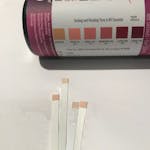



Out of ketosis (4 brands) In ketosis (4 brands)
The four brands of urine strips were indistinguishable, performing identically to one another. Based on this, I see these as a commodity product — my guess is that any reputable brand works and it is fine to shop based on price.
The color codes for interpreting strip color for the Kiss My Keto brand show a creamy, less fleshy color for the negative… I believe the other brands color charts are more accurate based on the colors I observed on the strips.
Precision
The testing methods vary in terms of precision, by which I mean the exactness of the ketone measurement.
The digital meters (both blood and breath) give you a numerical reading, whereas the urine strips give you a color range. If you are into precision, you may struggle with the lack of an exact measurement provided by the urine strips; although directionally accurate, sometimes, a color can be between the colors on the chart. Ultimately, the urine strips give you a sense of where you are, but not an exact reading.
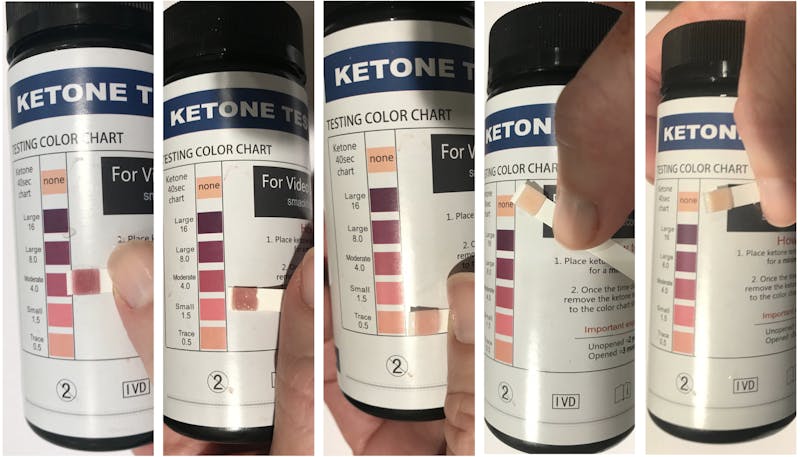



There are larger questions about the precision of the urine strips. Individual levels of acetoacetate in urine vary, and even within a particular individual, there is evidence that as the body becomes more accustomed to burning ketones, less acetoacetate spills into the urine.
As reported in The Art and Science of Low Carb Living (page 164), as keto-adaption progresses, an individual may find that he or she is producing lower levels of acetoacetate in urine, even while blood levels of β-hydroxybutyrate remain constant. So urine strips may or may not work well for you. That said, although I spend much of my time in ketosis, enough acetoacetate was present in my urine to give a good indication of my level of ketosis.
Consistency
Another aspect of accuracy is internal consistency. By this I mean, when testing the blood, breath or urine at roughly the same point in time, do I get the same result? For this reason, I tested each method four times at each testing occasion.
On this metric, all of the testing regimes performed reasonably. The Keto-Mojo bounced around a bit, particularly on the 5th test where it was struggling in general.
Keto-Mojo |
|||||
| Test #1 | Test #2 | Test #3 | Test #4 | Test #5 | |
| Trial 1 | 3.5 | 1.4 | 1.0 | 0.7 | 0.8 |
| Trial 2 | 3.7 | 1.5 | 1.4 | 0.8 | 1.0 |
| Trial 3 | 4.1 | 1.2 | 1.2 | 1.0 | 0.4 |
| Trial 4 | 3.2 | 1.4 | 1.2 | 0.7 | 0.9 |
| Average | 3.6 | 1.4 | 1.2 | 0.8 | 0.8 |
The exact reading of the Ketonix varied a bit among the four data points for each test, but within a fairly tight band. With each and every test, it was internally consistent regarding whether I was in deep ketosis, in moderate ketosis, or out of ketosis.
Ketonix |
|||||
| Test #1 | Test #2 | Test #3 | Test #4 | Test #5 | |
| Trial 1 | 14.1 | 4.0 | 2.3 | 2.5 | 3.0 |
| Trial 2 | 16.6 | 5.3 | 4.4 | 3.3 | 2.9 |
| Trial 3 | 12.5 | 4.9 | 3.5 | 3.7 | 2.6 |
| Trial 4 | 15.3 | 3.4 | 3.8 | 3.7 | 3.3 |
| Average | 14.6 | 4.7 | 3.5 | 3.3 | 3.0 |
Likewise, the LEVL device showed variation at each test point, but remained internally consistent with average levels steadily decreasing as my level of ketosis diminished.
LEVL |
|||||
| Test #1 | Test #2 | Test #3 | Test #4 | Test #5 | |
| Trial 1 | 644.7 | 23.3 | 13.8 | 12.4 | 6.4 |
| Trial 2 | 395.1 | 16.8 | 16.1 | 10.0 | 9.6 |
| Trial 3 | 366.2 | 19.1 | 14.2 | 13.4 | 3.6 |
| Trial 4 | 278.4 | 16.1 | 12.1 | 14.1 | 9.3 |
| Avarage | 421.1 | 18.8 | 14.1 | 12.5 | 7.2 |
Urine strips consistency
Finally, the urine strips were very consistent at each test point. When I dipped four strips in the urine sample at the same time, the color was always identical across the four strips (and across the four brands as well).
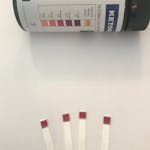







The Keto Stat was so consistent that it gave me a 0.00 reading for every test, regardless of my level of ketosis, making it essentially useless. That is too much consistency! As a result, it is disqualified.
3. Price
With any testing system, a potential customer should consider the total system price — the price of the initial investment for equipment (if any), plus any ongoing expenses for necessary extras (like, in the case of the blood ketone meters, more test strips). The number of tests desired varies widely by user.
For this review, I will look at a user who tests 200 times, or a little more than once per day, over the course of six months.
The blood ketone meter pricing is as follows:
| Brand | Starter kit | 200 test strips* | 200 lancets | Cost for 200 tests |
| Keto-Mojo | $60 | $188 | $10 | $258 |
* 10 strips included in the starter kit.
The breath ketone meter pricing is as follows:
| Brand | Equipment | Extras | Cost for 200 test |
| Ketonix | $250 | – | $250 |
| LEVL | $699 | $250 for five extra sensors | $949 |
Urine strips are the least expensive way to test:
| Brand | Price | Quanity | Price/strip | Cost for 200 tests |
| Kiss My Keto | $8.99 | 200 | 4.5 cents | $8.99 |
| Nurse Hatty | $7.95 | 150 | 5.3 cents | $10.60 |
| Smack Fat | $7.95 | 100 | 8.0 cents | $15.90 |
| Top Notch | $6.95 | 125 | 5.6 cents | $11.12 |
4. Qualitative factors
Accuracy and price are definitely important. But what else should you consider?
Setup
Are you comfortable with fairly detailed set-up instructions? If not, setting up the LEVL might be a bit much.
- Keto-Mojo: Insert code strip from test strip container. Good to go!
- Ketonix: Charge for 12 hours. Install app and pair with device.
- LEVL: Charge for 24 hours. Install app and pair with device. Calibrate, which involves pressing buttons and flushing two separate test gases into the breath pods.
- Urine strips: Open container. It couldn’t be any simpler.
Ick factor
Because some people prefer not to mess with bodily fluids… If that’s you, you might prefer a breath meter.
- Keto-Mojo: Needles. Blood. Need I say more?
- Ketonix: Just breathe!
- LEVL: Just breathe!
- Urine strips: Umm… urine.
Power supply
Reliance on electrical power varies. How high or low-tech do you want to go?
- Keto-Mojo: Runs for a long time on the (included) battery.
- Ketonix: Must be either plugged into the wall or plugged into a rechargeable battery (included).
- The LEVL requires pretty much constant power; if you unplug for long, you will have to recalibrate the sensor.
- Urine strips: Powered by the chemical reaction! (Needs no power at all.)
Ease of use
>
Because more steps means more room for error… Which of these methods is the simplest?
- Keto-Mojo: Prick your finger, squeeze out some blood, insert a disposable strip into a meter and test.
- Ketonix: Open app and exhale.
- LEVL: Open app, press mode button, hold breath, exhale into breath pod, place in unit and close the lid.
- Urine strips: Remove a strip, pee on it and compare color to bottle.
Alcohol friendly
Will your glass of wine with dinner taint your results? If you buy a breath meter, the answer is yes.
- Keto-Mojo: blood alcohol levels do not affect ketone blood tests.
- Ketonix: The sensor will confuse alcohol in your breath with ketones, giving you elevated results until the alcohol is out of your system.
- LEVL: The sensor will confuse alcohol in your breath with ketones, giving you elevated results until the alcohol is out of your system. The manufacturer also recommends waiting an hour to test after consuming things like green tea and mint, smoking or brushing your teeth.
- Urine strips: Alcohol does not affect urine tests for ketones.
Data friendly
Do you want to store and track your ketone results? Some products make that really easy; others don’t.
- Keto-Mojo: The meter saves data, but you can also purchase a Bluetooth adapter ($25) to export data and/or connect up with Head’s Up Health. ($9/month).
- Ketonix: An export of data to a CVS file is free, as are basic graphs of trend lines within the app. You can also integrate your Ketonix data with Head’s Up Health ($9/month).
- LEVL: The app saves data, and you can integrate your LEVL data with Head’s Up Health ($9/month).
- Urine strips: No data, here, unless you collect it manually.
Many tests
Do you like a lot of feedback? Might you want to test several times a day just to see where you are? If so, consider the cost of incremental tests.
- Keto-Mojo: About a dollar per test.
- Ketonix: No incremental cost.
- LEVL: No incremental cost per test, but ongoing sensor replacement each month.
- Urine strips: About a nickel per test.
Here is a quick summary of where each method excels (and doesn’t). Overall, we love the Ketonix for its easy, ick-free operation and the urine strips for their lack of set-up and ease of use!
Green light means thumbs up… red light means thumbs down… yellow is somewhere in-between.
5. Pros and cons
Keto-mojo — the gold standard? Not always
(Price listed is for equipment and enough supplies to conduct 200 tests.)
Pros:
- Accurate at high ketone levels.
- Data support options and alcohol-friendly.
Cons:
- Inaccurately high readings when out of ketosis. (Bad strips?)
- Expensive ($250).
- Testing requires a tiny blood sample and several steps.
- Strips cost about a dollar, so costs add up if testing frequently.
Ketonix — high-tech made easy
Pros:
- Accurate.
- Easy to use, with data support options and no incremental cost per test.
- No bodily fluids.
Cons:
- Expensive ($250).
- Requires set-up and either power supply or rechargeable battery.
- Alcohol interferes with readings.
LEVL — very pricey and high-maintenance
Pros:
- Accurate.
- Easy to use, with data support options and no incremental cost per test.
- No bodily fluids.
Cons:
- Extremely expensive (~$950) and lots of maintenance.
- Requires set-up and a power supply.
- Alcohol, and many other things like mint and green tea, can interfere with readings.
Urine strips — Old-school but may get the job done
Pros:
- Very inexpensive (~$11).
- Easy to use, alcohol-friendly and incremental tests do not cost much.
Cons:
- Internally consistent, but not very precise.
- May not work for everyone.
- No data options and involves bodily fluids.
6. Conclusion
How should you test for ketones? That’s really up to you. All three methods can provide useful feedback.
Personally, I found the breath meter Ketonix to be reliable, easy, and fun to use. It hits the same price point as the blood ketone meters, and I liked not having to take a blood sample. When I send these devices back to the Diet Doctor office, it will be the one I miss the most!
But for you as a potential buyer, it is really a trade-off between accuracy, price and the qualitative factors that YOU care about most. Which one suits your wallet, needs and personality?

